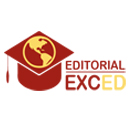Envíos
Lista de comprobación para la preparación de envíos
Como parte del proceso de envío, los autores/as están obligados a comprobar que su envío cumpla todos los elementos que se muestran a continuación. Se devolverán a los autores/as aquellos envíos que no cumplan estas directrices.- El envío no ha sido publicado previamente ni se ha sometido a consideración por ninguna otra revista (o se ha proporcionado una explicación al respecto en los Comentarios al editor/a).
- El archivo de envío está en formato OpenOffice, Microsoft Word, RTF o WordPerfect.
- Siempre que sea posible, se proporcionan direcciones URL para las referencias.
- El texto tiene interlineado sencillo; 12 puntos de tamaño de fuente; se utiliza cursiva en lugar de subrayado (excepto en las direcciones URL); y todas las ilustraciones, figuras y tablas se encuentran colocadas en los lugares del texto apropiados, en vez de al final.
- El texto se adhiere a los requisitos estilísticos y bibliográficos resumidos en las Directrices del autor/a, que aparecen en Acerca de la revista.
Artículos
Política de sección por defectoAviso de derechos de autor/a
La Editorial Exced, publica el contenido de la Revista Transdisciplinaria de Estudios Sociales y Tecnológicos (RTEST), bajo una bajo una licencia de Creative Commons Reconocimiento-NoComercial 4.0 Internacional
La totalidad del contenido de la Revista Transdisciplinaria de Estudios Sociales y Tecnológicos (RTEST), está registrado y protegido por las leyes de protección de la propiedad intelectual.
Los autores conservan los derechos de autor y ceden a la revista el derecho de la primera publicación, con el trabajo registrado con la licencia de atribución de Creative Commons correspondiente, que permite a terceros utilizar lo publicado, siempre que mencionen la autoría del trabajo y la primera publicación en esta revista.
Los autores pueden realizar otros acuerdos contractuales independientes y adicionales para la distribución no exclusiva de la versión del artículo publicado en esta revista, como incluirlo en un repositorio institucional o publicarlo en un libro; siempre que indiquen claramente que el trabajo se publicó por primera vez en esta revista.
Declaración de privacidad
Los nombres y las direcciones de correo electrónico introducidos en esta revista se usarán exclusivamente para los fines establecidos en ella y no se proporcionarán a terceros o para su uso con otros fines.











